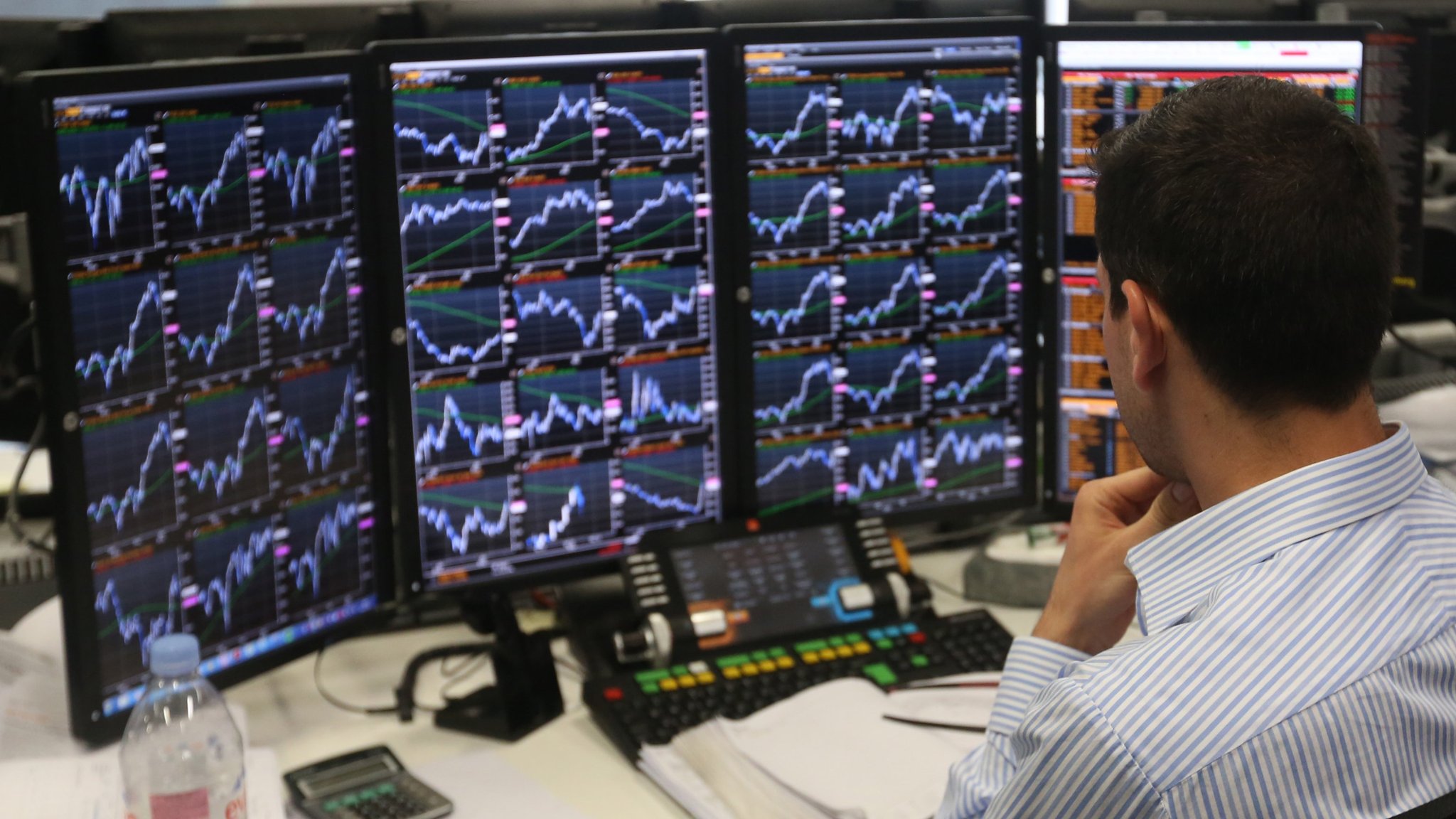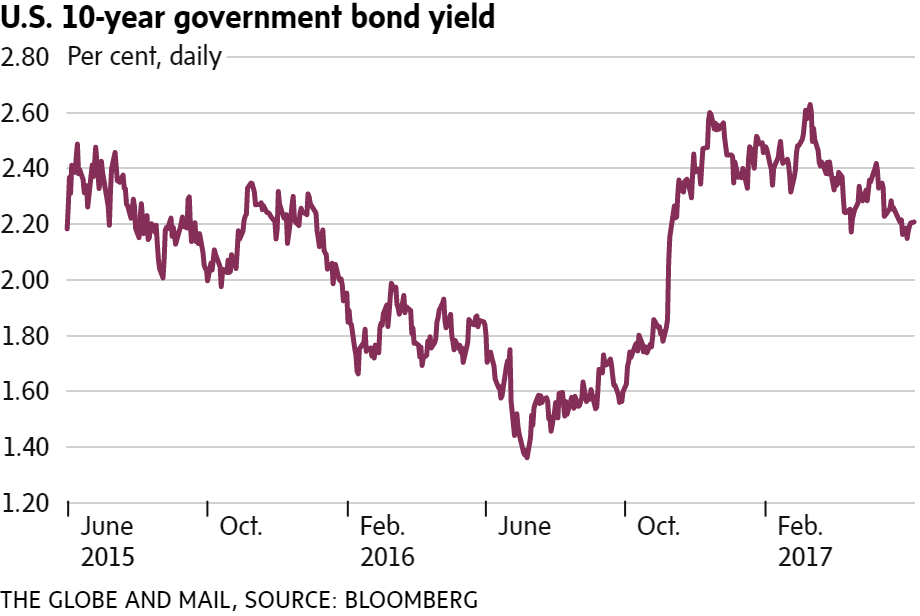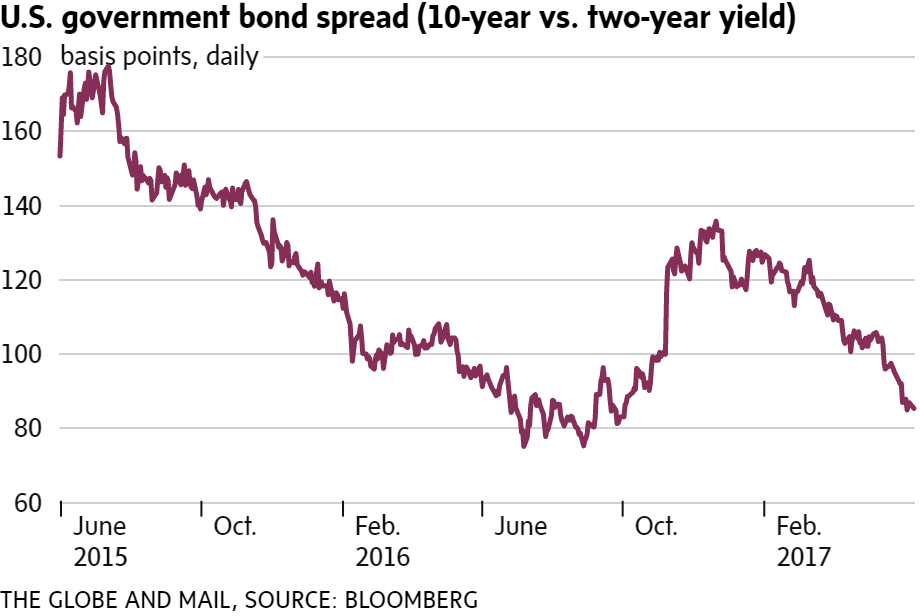
![]() A flattening bond yield curve suggests the rate hikes are likely to hurt growth and cool the economy, says ETF Adviser Larry Berman.
A flattening bond yield curve suggests the rate hikes are likely to hurt growth and cool the economy, says ETF Adviser Larry Berman.
Source: The Globe and Mail
The shape of the yield curve tells us a lot about investor expectations about the future. As of Sunday night, the odds the U.S. Federal Reserve raises the overnight rate was 97 per cent, according to the derivatives tied to the federal funds rate. In fact, that is the last rate hike the market has priced in at this point despite the Fed suggesting rates will be closer to 3.00 per cent by the end of 2018.
Since the Fed started raising interest rates in December, 2015, the yield curve has been flattening. The one exception was in the weeks after U.S. President Donald Trump’s election when the markets were excited about Mr. Trump’s growth and stimulus plan, which is still quite the mystery. A flattening curve in a combination of short-term interest rates moving up and longer-term interest rates falling suggests the rate hikes are likely to hurt growth and cool the economy.
We have said for years that interest rates would have difficulty normalizing. We have gone as far as to say that rates may stay low on average for decades to come. One reason we think so is that the amount of debt in the world today relative to past cycles is off the charts. Total debt-to-GDP (gross domestic product) levels globally are toxic. A 25-basis-point rate hike today has the impact of the 75-basis-point rate hike of past cycles due to all the debt.
For some perspective, the administration of former U.S. president Barack Obama borrowed about $9-trillion (U.S.), almost doubling the size of the federal debt as a percentage of the economy. Corporate balance sheets have been levering up, too, using the funds to buy back stock. A small rate hike today in dollar terms is more than double the hit it used to be. And on a percentage basis, going from zero rates to 1 per cent is much tougher on people and corporations that are only able to afford things because of the ultralow rates. We are seeing housing slow down, defaults on car loans have never been higher, and the middle class that has been stretching to keep up will be hurt the most.
When the yield curve flattens, it tells us that longer-term bond investors are worried about the economy in the future. Historically, an inverted yield curve is a precursor to a recession. We are not there yet, but the next few weeks will be very interesting to see if long bonds rise because investors are fearing inflation and more rate hikes to curb it, or if long bonds break below the 2016 yield curve trough in a sign that investors are more worried about the outlook for growth and fear that long bonds are portending a recession.
We learned a long time ago that bond investors were far smarter about the outlook for the economy than equity investors. The behaviour of the yield curve suggests we get even more cautious versus the benign exuberance we are seeing in equity markets. Perhaps last Friday’s aggressive 2.5 per cent decline and reversal in the QQQ, which is the Nasdaq 100 exchange-traded fund, is a sign that equity investors are getting the message. We suggested about six months ago to buy longer-term bonds to protect your portfolios. If we see U.S. 10-year yields remain below 2.40 per cent by the end of the week, odds are good that we see them hit 1.80 per cent (where they were before Mr. Trump’s election) before they hit 3.00 per cent as Wall Street consensus would make you believe.




